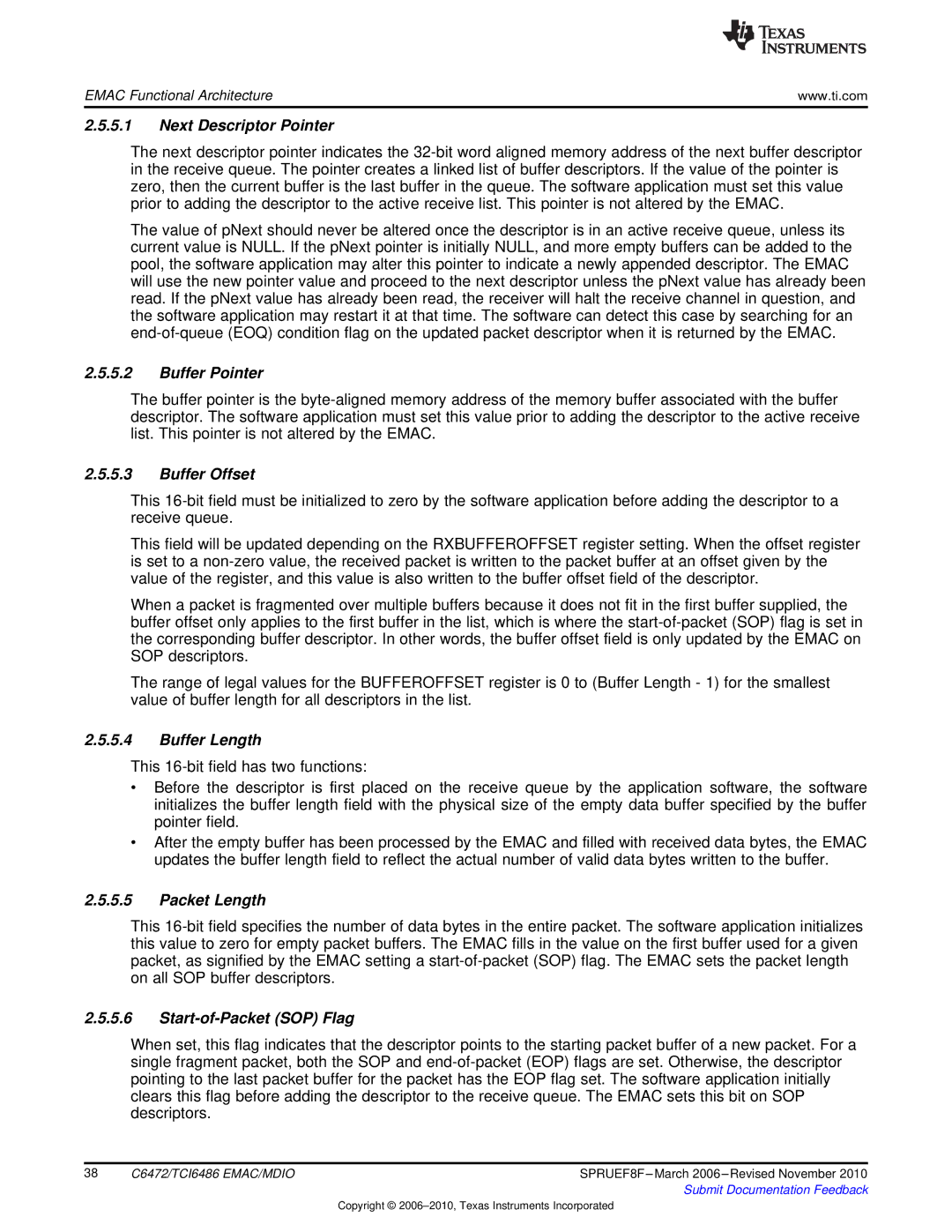
EMAC Functional Architecture | www.ti.com |
2.5.5.1Next Descriptor Pointer
The next descriptor pointer indicates the
The value of pNext should never be altered once the descriptor is in an active receive queue, unless its current value is NULL. If the pNext pointer is initially NULL, and more empty buffers can be added to the pool, the software application may alter this pointer to indicate a newly appended descriptor. The EMAC will use the new pointer value and proceed to the next descriptor unless the pNext value has already been read. If the pNext value has already been read, the receiver will halt the receive channel in question, and the software application may restart it at that time. The software can detect this case by searching for an
2.5.5.2Buffer Pointer
The buffer pointer is the
2.5.5.3Buffer Offset
This
This field will be updated depending on the RXBUFFEROFFSET register setting. When the offset register is set to a
When a packet is fragmented over multiple buffers because it does not fit in the first buffer supplied, the buffer offset only applies to the first buffer in the list, which is where the
The range of legal values for the BUFFEROFFSET register is 0 to (Buffer Length - 1) for the smallest value of buffer length for all descriptors in the list.
2.5.5.4Buffer Length
This
•Before the descriptor is first placed on the receive queue by the application software, the software initializes the buffer length field with the physical size of the empty data buffer specified by the buffer pointer field.
•After the empty buffer has been processed by the EMAC and filled with received data bytes, the EMAC updates the buffer length field to reflect the actual number of valid data bytes written to the buffer.
2.5.5.5Packet Length
This
2.5.5.6Start-of-Packet (SOP) Flag
When set, this flag indicates that the descriptor points to the starting packet buffer of a new packet. For a single fragment packet, both the SOP and
38 | C6472/TCI6486 EMAC/MDIO | SPRUEF8F |
|
| Submit Documentation Feedback |
Copyright ©
